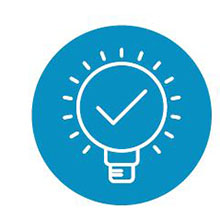ENGAGE THE ECOSYSTEM:
Education systems should take a whole-of-government and multistakeholder approach to engage a broad set of actors to support student learning.
Ministries of Education should engage, incentivize and leverage a wide and diverse set of stakeholders, inside and outside of the education system, when developing and implementing EdTech programs and policies. This ecosystem includes key stakeholders such as students, teachers, school leaders, parents/caregivers, NGOs, donor agencies, academia, and private sector companies, as well as other governmental agencies and authorities. Innovative digital educational content, software, applications, algorithms, ‘edutainment’ and EdTech-enabled services are provided by many organizations – some local, some regional, and some global. Ministries of Education can’t do it alone – and they shouldn’t try to do so.
The growing relevance of digital technologies is reflected today in many educational systems globally. However, the integration of technology is not enough to guarantee learning. The adoption of digital technologies offers important opportunities, however, without a holistic, contextually relevant and scalable approach, technologies can increase the existing inequalities of opportunities. This is why it is so critical to design and adopt comprehensive EdTech interventions capable of consolidating technical and human infrastructures to better serve the education systems.
Policymakers and researchers should mutually collaborate, to provide robust evidence that supports (monitor and evaluate) EdTech public policies. Moving beyond intuition to promote regular independent evidence about the impact of technology in schools. Omidyar Network (2019), for instance, advocate for the importance of evidence-based government policy, to implement appropriate EdTech interventions.
It is almost impossible to achieve the goal of providing a personalized learning experience if data is not actionable, available in real-time and makes sense to teachers, decision-makers, students, and parents. One of the challenges in this field is that some EdTech vendors are unwilling or unable to integrate with existing education management systems. That affects administrators when trying to integrate platforms to extract data from multiple sources. Also, many education data systems and procurement processes are not designed to incentivize competition among smaller EdTech vendors and solution providers.
See the following resources for more details:
• Education Global Practice, The World Bank (2020). EdTech Innovation Ecosystems: A Knowledge Pack.
• Omidyar Network (2019). Scaling Access & Impact: Realizing the Power of EdTech https://es.scribd.com/document/455370434/Scaling-Access-Impact-Realizing-Power-of-EdTech
